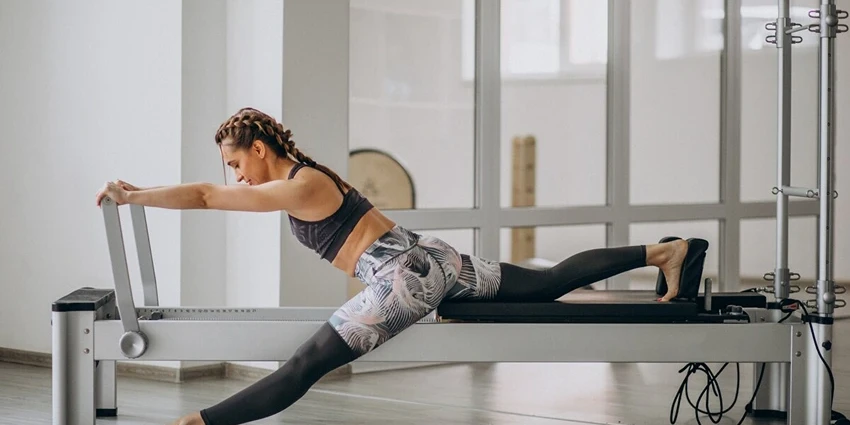Postpartum depression (PPD) is a condition that can affect any new mother, characterized by feelings of extreme sadness, anxiety, and exhaustion that can interfere with a woman’s ability to care for herself or her family. At Rac Women, we understand the challenges of postpartum life, and we believe in the power of fitness to aid in the recovery and well-being of mothers.
In This Article
Understanding Postpartum Depression

The Prevalence and Impact of PPD
Postpartum depression affects approximately 1 in 7 women, making it a common complication of childbirth. It can stem from a combination of hormonal changes, psychological adjustment to motherhood, and fatigue.
Symptoms and Diagnosis
The symptoms of PPD can range from mild to severe and may include:
- Persistent sadness or low mood
- Lack of enjoyment or interest in the wider world
- Fatigue and a lack of energy
- Trouble sleeping at night and feeling sleepy during the day
Table 1: Symptoms of Postpartum Depression
| Symptom | Description | Percentage of Women Affected |
|---|---|---|
| Sadness | Persistent low mood | 70% |
| Anhedonia | Lack of interest | 65% |
| Fatigue | Ongoing tiredness | 85% |
| Sleep Issues | Difficulty sleeping | 75% |

The Role of Fitness in Managing Postpartum Depression
How Exercise Impacts Mental Health
Regular physical activity can have a profound impact on mental health. It can alleviate symptoms of depression by releasing endorphins, which are chemicals in the brain that act as natural painkillers and mood elevators.
Recommendations for Postpartum Women
The CDC recommends that postpartum women engage in at least 150 minutes of moderate-intensity aerobic activity every week. This can include brisk walking, water aerobics, or simple postpartum exercise routines.
Table 2: CDC Recommendations for Postpartum Exercise
| Activity Type | Description | Recommended Time |
|---|---|---|
| Aerobic | Brisk walking, swimming | 150 minutes/week |
| Strength Training | Light weights, resistance bands | 2 days/week |
| Flexibility | Stretching, yoga | Daily |
Developing a Postpartum Fitness Plan
Setting Realistic Fitness Goals
It’s important for new mothers to set achievable fitness goals. This might mean starting with short walks and gradually increasing the duration and intensity of exercise.
Safe Exercises After Childbirth
Some safe postpartum exercises include:
- Pelvic tilts to strengthen the abdominal muscles
- Kegel exercises to strengthen the pelvic floor
- Walking or pushing a stroller for cardiovascular health
Table 3: Safe Postpartum Exercises
| Exercise | Benefits | Safety Tips |
|---|---|---|
| Pelvic Tilts | Strengthen core | Start slow |
| Kegel Exercises | Strengthen pelvic floor | Consistency is key |
| Walking | Improve cardiovascular health | Wear supportive shoes |

Fitness Programs and Postpartum Recovery
Types of Beneficial Fitness Programs
At Rac Women, we recommend a variety of fitness programs that can help with postpartum recovery, including:
- Postnatal Yoga: Focuses on strength and flexibility.
- Low-impact Aerobics: Helps to improve mood and reduce stress.
- Pilates: Aids in strengthening the core and pelvic floor.
Stories of Recovery Through Fitness
Many women have found solace and strength in fitness programs postpartum. Their stories inspire us to create programs that cater to the unique needs of postpartum women.
Table 4: Recovery Stories
| Name | Exercise Type | Impact |
|---|---|---|
| Anna | Postnatal Yoga | Improved flexibility and reduced anxiety |
| Beth | Low-impact Aerobics | Increased energy levels |
| Clara | Pilates | Strengthened core muscles |
Challenges in Postpartum Fitness
Common Obstacles
New mothers may face various obstacles when trying to incorporate fitness into their routine, such as lack of time, fatigue, and lack of motivation.
Overcoming These Challenges
Rac Women provides strategies to overcome these challenges, such as:
- Finding Time: Incorporating short workouts during the baby’s naptime.
- Dealing with Fatigue: Engaging in light exercises that do not overly strain the body.
- Staying Motivated: Setting small, achievable goals and celebrating progress.
Table 5: Overcoming Fitness Challenges
| Challenge | Strategy | Example |
|---|---|---|
| Time | Short, efficient workouts | 10-minute yoga flow |
| Fatigue | Light exercise | Gentle walk with the stroller |
| Motivation | Set achievable goals | Weekly fitness milestones |

Creating a Supportive Environment for Fitness
The Importance of Support from Family and Friends
A supportive environment is key to a successful postpartum fitness journey. Encouragement from loved ones can make a significant difference in staying committed to fitness goals.
Community and Online Resources
Rac Women recommends leveraging community resources such as local fitness clubs and online support groups that offer camaraderie and understanding.
Table 6: Supportive Resources for Postpartum Fitness
| Resource Type | Description | How to Access |
|---|---|---|
| Family & Friends | Emotional and practical support | Open communication |
| Fitness Clubs | Tailored fitness classes | Local club memberships |
| Online Groups | Virtual support and advice | Social media platforms |
Nutrition and Fitness Postpartum
Nutritional Needs for Postpartum Women
Proper nutrition is essential for postpartum recovery. A balanced diet helps new mothers regain strength and provides the necessary energy for exercise and childcare.
Balancing Diet and Exercise
It’s important to find a balance between caloric intake and physical activity, especially if breastfeeding. Consulting with a nutritionist can provide personalized guidance.
Table 7: Balancing Nutrition and Exercise
| Consideration | Dietary Tips | Exercise Tips |
|---|---|---|
| Caloric Intake | Nutrient-dense foods | Adjust according to activity level |
| Breastfeeding | Extra 500 calories/day | Gentle exercises to start |
| Hydration | At least 8 glasses of water/day | Drink before, during, and after workouts |
Rac Women’s Expert Advice
Our Expert Insights into Postpartum Fitness
As experts in women’s fitness, Rac Women advocates for a gentle return to exercise postpartum, emphasizing the importance of listening to your body and progressing at your own pace.
Success Stories from Our Clients
We celebrate the success stories of our clients who have found strength and healing through our postpartum fitness programs.
Table 8: Client Success Stories
| Client | Program | Outcome |
|---|---|---|
| Emily | Customized Training | Regained pre-pregnancy fitness levels |
| Sarah | Group Fitness Classes | Found a supportive community |
| Olivia | Nutrition & Exercise Plan | Achieved balanced lifestyle |
Frequently Asked Questions
Low-impact aerobic activities, such as walking and swimming, are beneficial. Yoga and Pilates can also help improve mood and restore physical strength.
It’s generally safe to begin light exercises like walking and pelvic floor exercises a few days after delivery, as long as you feel up to it and your doctor agrees.
While exercise is a beneficial component of a comprehensive treatment plan for PPD, it should not replace medical treatment prescribed by a healthcare provider.
Table 9: FAQs on Postpartum Fitness
| Question | Answer |
|---|---|
| Best exercises for PPD? | Low-impact aerobics, yoga, Pilates |
| When to start postpartum exercise? | After clearance from a healthcare provider |
| Exercise vs. Medication for PPD? | Exercise complements, but does not replace, medical treatment |
Ellen Crandall
Meet Ellen, your fitness compass in the world of athletics, training, and gym culture. With a commitment to well-being and a penchant for all things workout-related, Ellen is here to guide you on your journey to a healthier, fitter you. Join the fitness revolution, led by Ellen, and embrace the power of an active lifestyle.




